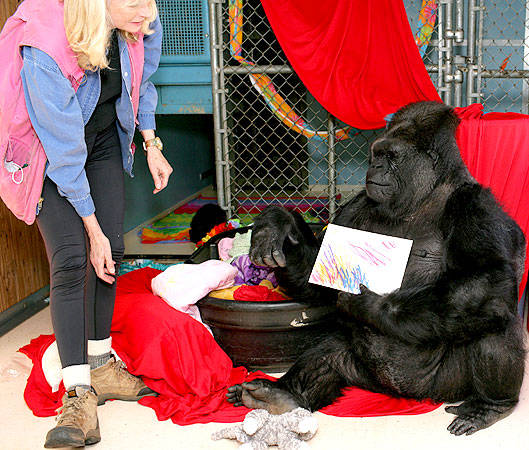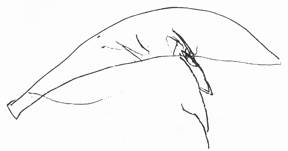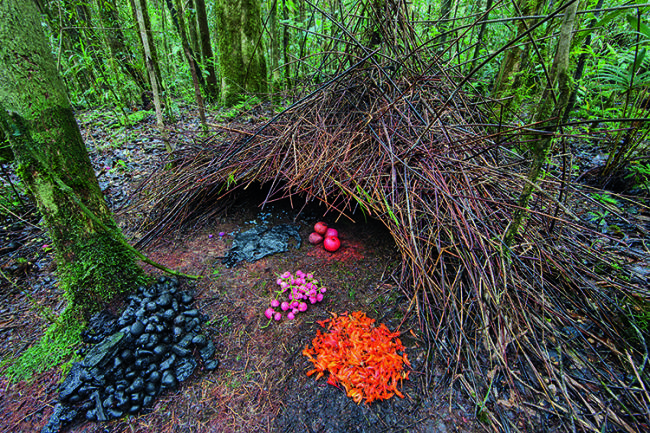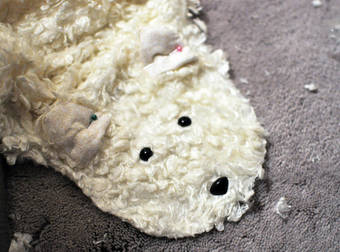The ability to make and understand art is often used as an example of what differentiates humans from the rest of the animal kingdom. However, research shows that, when it comes to appreciating aesthetics, we’re definitely not alone. Not only is it adorable when animals get creative, but it also allows us to better understand their behaviors and how they might see the world. Information on how animals see and understand things like color and composition can also help facilities like zoos and sanctuaries create more pleasant spaces for animals, resulting in improved health.
So which animals create “art”?
1. Gorillas
 share
share
Koko, the famous gorilla who can “speak” sign language, also likes to paint. Not only does she paint, but she can also describe, via signs, what she is painting to her human friends. She also has opinions about art. In one case, she
expressed her dislike for one of her own paintings by signing “toilet” above it. In another instance, she signed “Koko love” regarding a painting done by a fellow primate, a chimp named Ai. The paintings look abstract (or like scribbles) to us, but it seems that Koko might see them in a different way.
2. Chimpanzees
 share
share
This piece was created by a chimp named Moja, who gave it the name “Bird.” There’s some debate about how animals title their artwork, but chimps are remarkably like us when it comes to the creative process. They get grumpy when interrupted in the process of making something, and once they consider a project to be complete, they will refuse to change it further. Again, it’s not easy to determine the motivation or thought process behind this behavior, but it seems that the creative impulse is not limited to humans.
3. Elephants
 share
share
There’s no question that elephants are incredibly intelligent, with social rituals that are very similar to those of humans, as well as distinct emotions (yes, elephants cry). Elephant paintings are fairly well-known, but there is some debate as far as scientists are concerned. Unlike apes, elephants do not title their paintings, and some researchers argue that the painting motions are simply trained into the elephants and don’t “mean” anything in the artistic sense. Elephants also only see two pigments, blue-violet and yellow-orange. Still, “elephant art” is sold by various organizations to raise funding for elephant conservation.
4. Dolphins
 share
share
Like elephants, dolphins were trained into making art, using a paintbrush encased in a buoy that can be held safely in their mouths. However, something interesting happened after the dolphins were trained. Erin Wise, who trained the dolphins, noted that each of the five painting dolphins has its own unique method of mark-making, which could indicate some form of aesthetic judgment. However, the color in this case doesn’t matter; dolphins have monochromatic vision and only see green. Because the paintings are primarily created for human amusement, there’s also some ethical debate over practices like this.
5. Bowerbirds
 share
share
Most animal art comes from animals living in captivity (that is, with humans), so animals creating art completely on their own is rare. The bowerbird is the closest we can come to an animal that creates “art” completely on its own. The male bowerbird will select items based on color, size, and shape when constructing his nest with the hopes of attracting a mate. The more elaborate the nest, the better his chances of mating. Something like this, which involves collecting and arranging specific items, is a bit different than painting, but it still points to the birds having an innate understanding of and appreciation for color and form.
(via Care2)
Art is used by humans for many reasons, from recording memories and events, to expressing complex emotions when language might fail us, to creating technical masterpieces. Humans, however, can explain their process for the most part, but animals can’t. Researchers are still trying to find out why animals do what they do when it comes to being creative. Still, the fact that they can create, explain (to an extent), and judge visual images tells us that there’s way more going on than we thought.
 share
share
 share
share
 share
share
 share
share
 share
share



